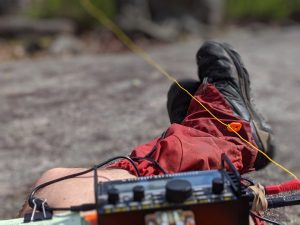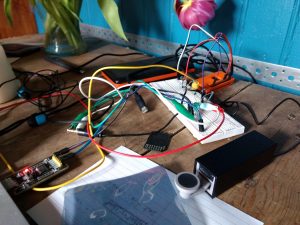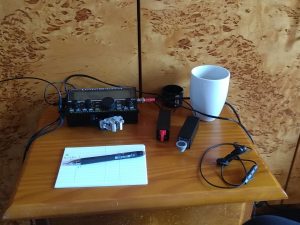I spend a week walking a part of the Bibbulmun track – a long distance walking track in Western Australia. I knew there were a couple of SOTA summits nearby. Turns out there were four summits pretty much right on our track. Over a week of walking, I activated three of them, and activated one of them for the first time ever. Thanks to Phil VK6KPS for planning the walking — it made it nice easy hiking.
This was proper hiking. We carried all we needed for a week (food, cooking gear sleeping gear, tent/bivvy). There are track shelters a days’ walk apart but sometimes a tent is needed if the shelters are crowded.
In addition to all of that, I squeezed in my KX-2, a SOTABeams end-fed 40m wire, a 6m fibreglass fishing pole, and battery and solar panel. It all felt a bit heavy but after a few days, I was used to it.
I’d be using a callsign like VK/G0WCZ/P. Is that enough of a mouthful? Hooray for CW keyer memories 🙂
Now, to the summits:
VK6/SW-039 Mt Randall
I grabbed the gear and walked the 1km to the summit in light rain on the Friday afternoon. Quite windy and showers coming and going. Got to the summit and the rain and wind intensified. Not really getting-the-radio-out weather without a bothy bag or something to hide in. I decided to go back the next morning before we set off walking South.
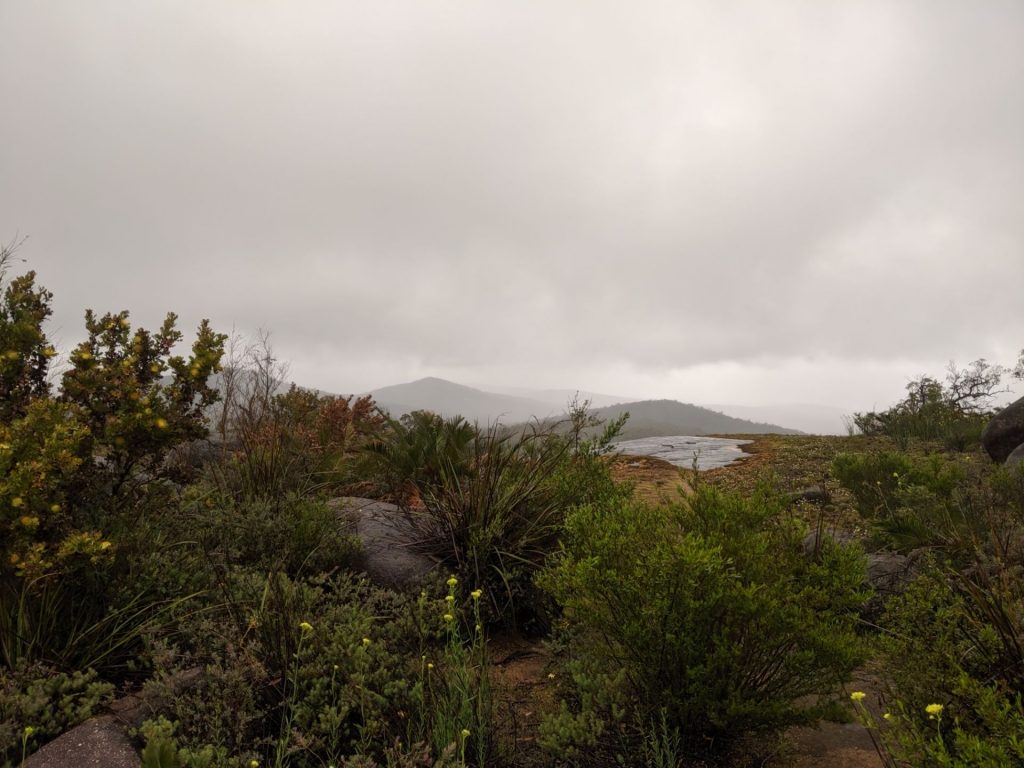
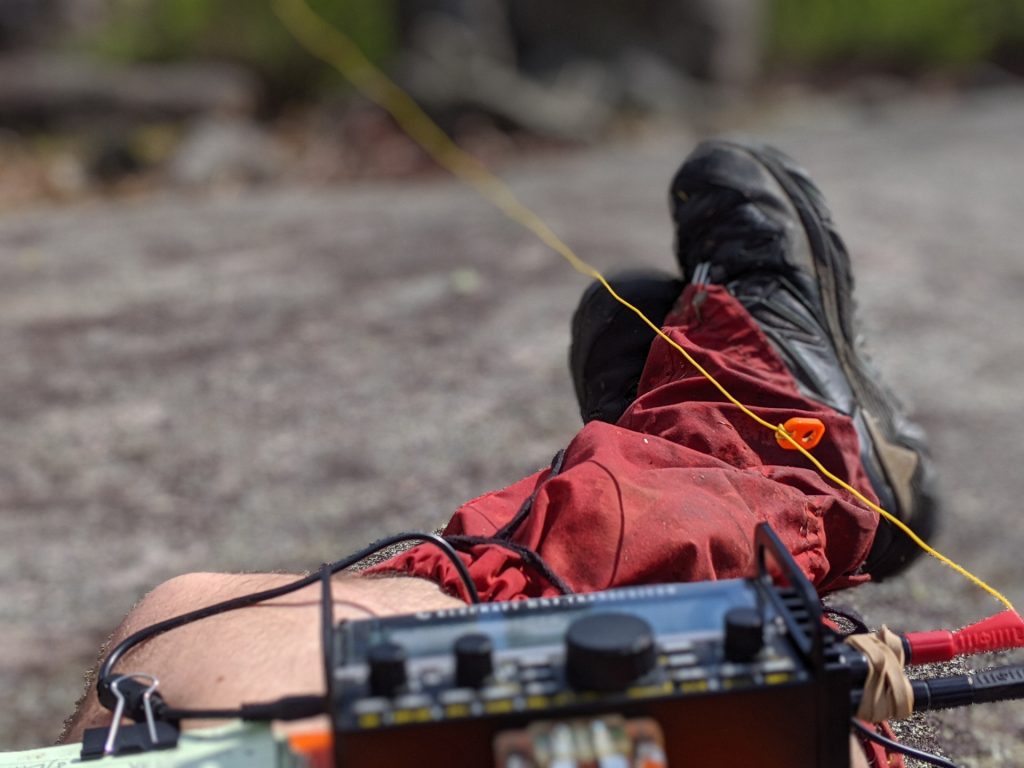
The next morning was much better. I was back up at the summit and set up. The summit is a bunch of big granite slabs and massive boulders. I set up on a rocky slab and jammed the fishing pole in a crack between a couple of boulders. Got my four contacts easily enough: 2 on CW, 2 on SSB, and all of these on 20m. Conditions seemed a bit strange, is it just that I’m not used to how 20 metres sounds in VK6? I worked into ZL1, VK3, VK4 and W6!. That W6 was a surprise. I just got my four contacts, bagging two points and moved on. I needed to get back to the shelter, grab the backpack and walk to the next shelter to keep our walk on schedule.
VK6/SW-031 Mt Cooke
Mt Cooke was right on the track, just after the Mt Cooke shelter. The morning of our third days’ walking we climbed Mt Cooke and settled in for a little SOTA from the summit. Was a bit of a slow start our of the hut so it was late morning (0300 UTC) and the bands seemed pretty quiet. Two contacts only, both into ZL1, on 20m. Nothing else. Activated, yes, but missed out on the 2 points.
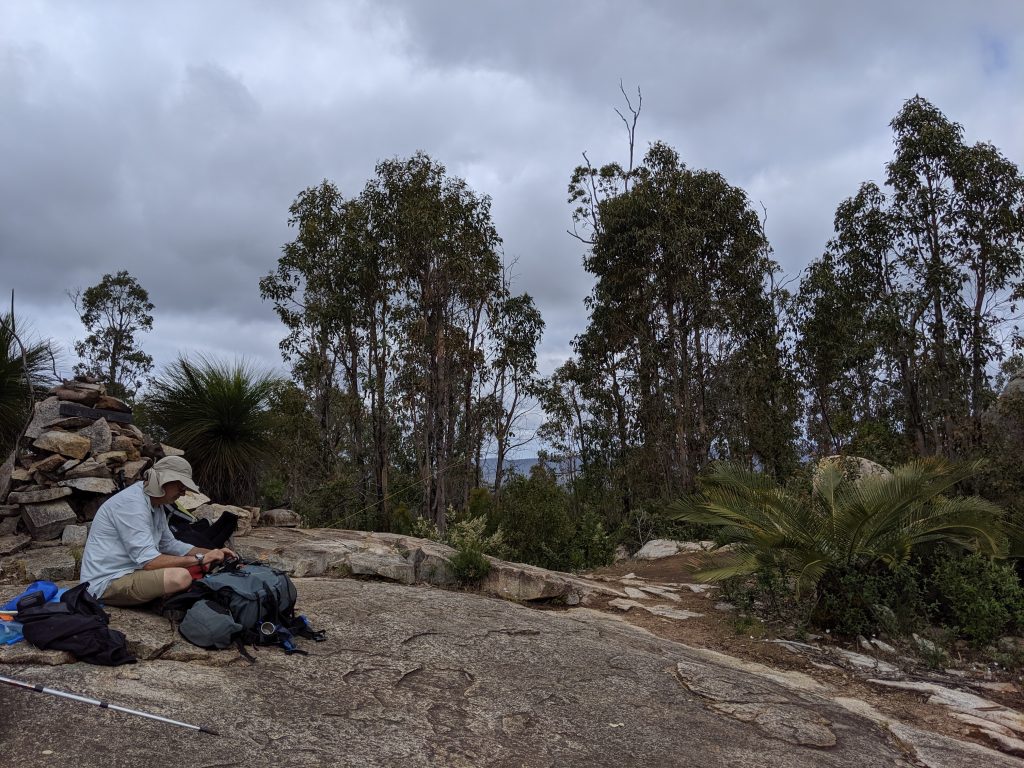
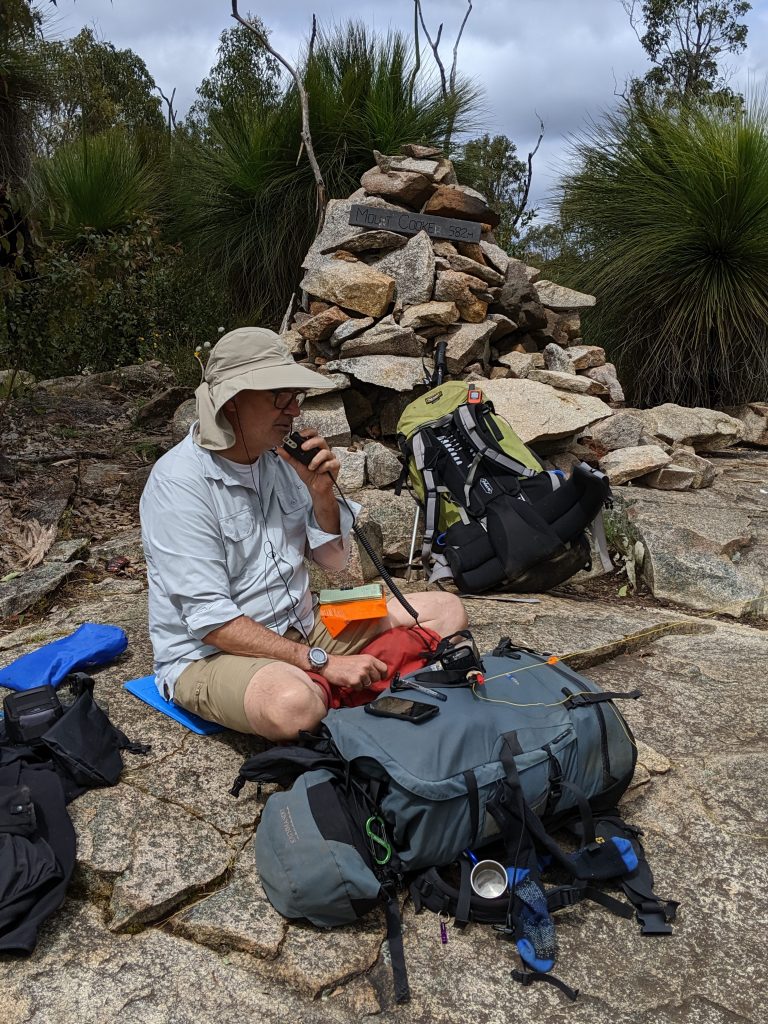
VK6/SW-037 Boonering Hill
A hot day. Again late morning. We stopped at the spur trail to the summit and it seemed like it was going to be a bit of a tough one, given the time. Also wanted to conserve batteries for Mt Wells that was still to come. Decided to not activate this one and just keep walking.
With an earlier start, it is only a short detour from the main track – perhaps a 1km round trip and 100m vertically to get to a nice granite top. It is worth considering if you are walking by.
VK6/SW-034 Mt Wells
Mt Wells had never been activated so it felt worth saving battery for. I’d brought a 5W panel and a rechargeable battery with me. However, the battery and the panel weren’t quite in agreement on how once should charge the other so not a lot of fresh battery from the sun. The night’s shelter for walkers — this time actually an old cottage — was also well within the activation zone. There was an old fire lookout tower as well which looked like a great place to operate from.
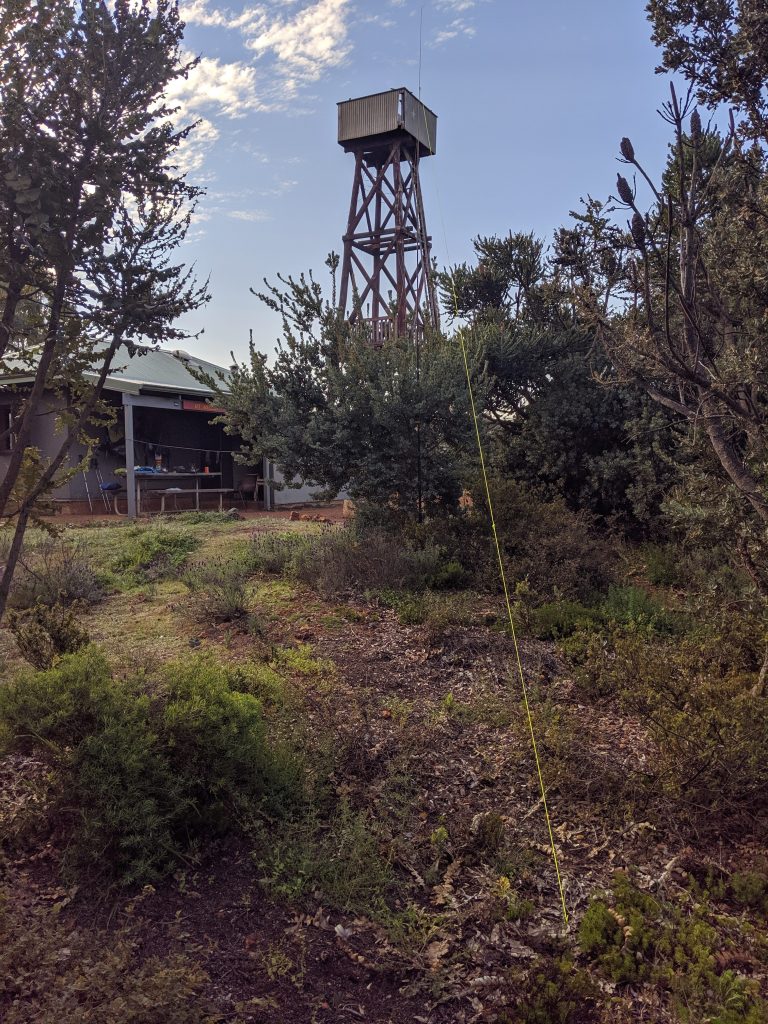
Our walking had got a bit quicker. We were leaving the shelter earlier and were now mostly arriving at the next shelter before lunch. So a quick lunch and time to set up.
The tower looked obvious as a place to operate from. There is a convenient platform half-way up complete with a couple of plastic chairs. I set up the end-fed half-wave with the counterpoise going down to the ground and the main 1/2 wave wire heading off to the 6m pole in the garden beyond the cottage. Having a chair to sit on and one for the rig made this a bit of a cushy operating position.
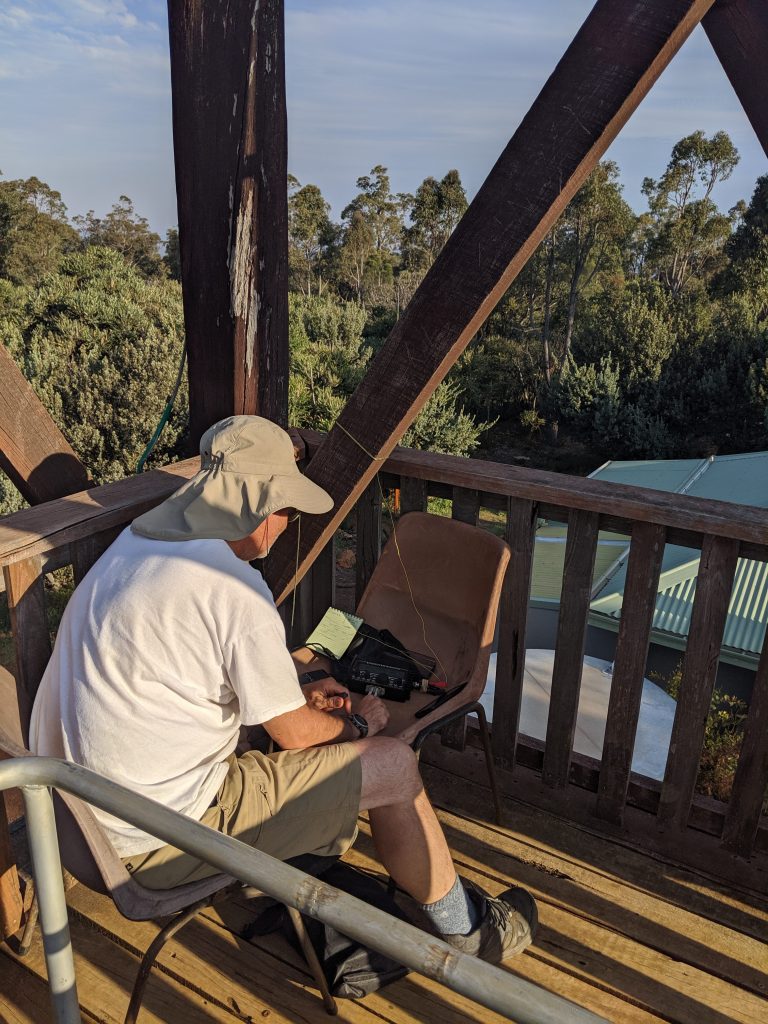
Again, contacts weren’t coming that easily. There was QRM from the comms tower on the summit and that was making 40m a bit hard to work on. I’d got an idea that CW contacts were few and far between so started out with SSB on 20m. I tried to break in to some QSOs and did a lot of calling CQ after spots. Nothing happening.
Finally I spotted on 20m CW (14.062) and got rolling with QSOs. Three fairly easy contacts (ZL1, VK4, ZL1) got me nearly there. By now the battery was dwindling so moved to 40 and spotted again. VK7CW came back after a few calls and as the battery percentage counted down to zero, we had a brief signal report exchange and I had my four. A dit .. dit and I looked down at the battery. Still delivering 2-ish watts receiving, and reading a barely possible 0 percent charge. Hooray for over-specced batteries!
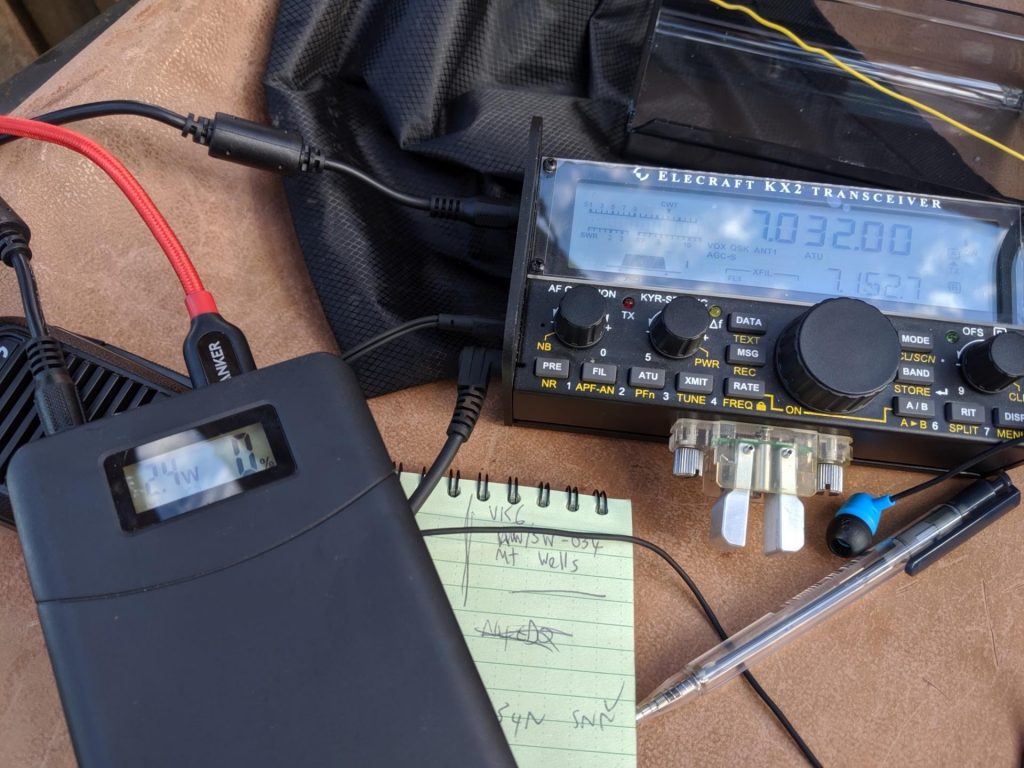
Mt Wells activated for the first time, and I get my 2 points. Just.
That ended SOTA for this trip. The rest of the walk was enjoyable and after 8 days we emerged off the track into the town of Dwelingup for a beer at the pub.
Was definitely work carring HF gear with me. Huge thanks to Phil VK6KPS for hiking guidance, antenna wrangling, photos and enthusiasm.
A few lessons learned I might as well document here:
- Generally, keep calling CQ and keep spotting. QSOs seem a bit more scarse in VK6 than in Europe. Guess that makes sense.
- SSB is hard work sometimes but can surprise. So being able and happy to do all CW activations really helps.
- I’m now pretty happy and confident with CW QSOs for SOTA after a few activations. Now I don’t have to think so hard, will be easier to do quick activations.
- I need to do more work on Solar charging before the next long-distance plus SOTA walk. It ought to be easier to charge either a KX-2 internal battery or an external one even without full direct sun all the time. Possibly a KX2 battery box plus charge makes sense.
Thanks to all the chasers. See you again from a summit soon I hope.
Oh, and I think I have a new lucky charm. The little SOTABeams mug that travelled with me:

